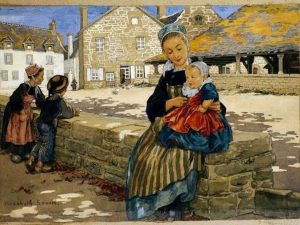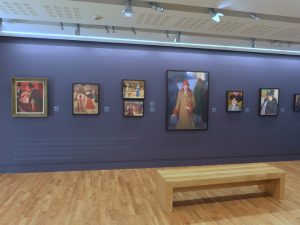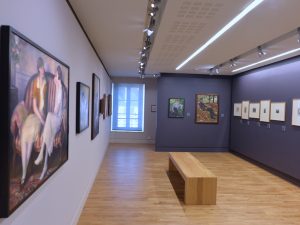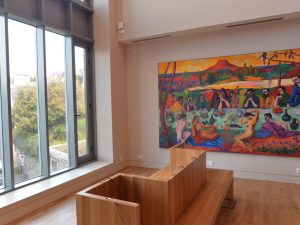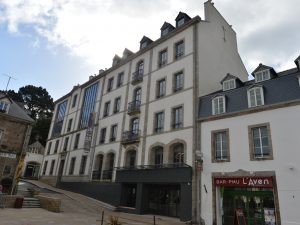Brittany, Finistère and Cornouaille, have always been privileged holiday and inspiration areas for many painters. Quimper is an important place of pictorial tradition, the streets of Quimper are lined with art galleries offering a wide panorama of the schools of yesterday and contemporary creation.
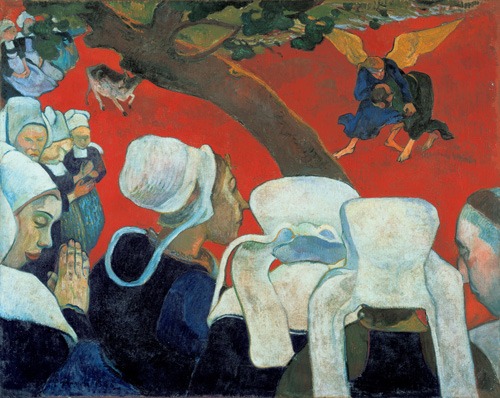
Pont Aven, the city of painters
Pont-Aven has been visited by painters since 1860 and reached its peak of fame in 1886 with the birth of the Pont-Aven school, around Gauguin, Bernard and Sérusier. Exhibitions and tours of the places that inspired these painters are offered. Pont-Aven also has many art galleries.
The arrival of Paul Gauguin and his disciples at Pont-Aven and then at Le Pouldu marked an important turning point in the history of painting. Émile Bernard, Maxime Maufra, Henry Moret, Charles Filiger and Paul Sérusier, on the advice of their master, presented a new pictorial conception that broke with the essence of traditional practices. By creating this movement called synthetism, they opened the way to a current of painting freed from academic principles. The self-portrait with the Yellow Christ, the Green Christ by Gauguin, the Talisman by Sérusier, the landscape of Pouldu by Filiger, Pont-Aven red sky by Maufra are only some of the very famous works of the group.
Museum of Pont Aven
Discover the work of artists inspired by Brittany and more particularly by Pont Aven. The new permanent exhibition, enriched by recent donations and acquisitions, presents works by Paul Gauguin, Emile Bernard, Paul Sérusier and other artists of the Pont Aven school. Educational tools, accessible to all, allow visitors to understand this artistic movement, while wandering through spaces offering comfort and unobstructed views of the town's landscapes.
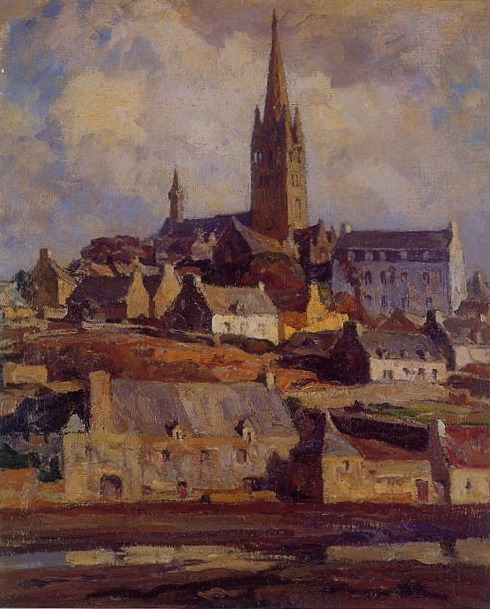
The painters of Concarneau
From 1870 to 1950, two generations of artists from all over the world fell under the spell of the Cornish conch. Around the medieval city, a walled town protected on its islet, were gathered all the motives to please the artists fond of picturesque: a superb architectural heritage, an active population of sailors, workers and peasants in traditional costumes and an important flotilla. This colourful show, with its sounds and lights, amazes painters and photographers, who are well received by the local population. Naturalists, realists, neo- and post-impressionists have worked side by side or in succession. Little masters sensitive to daily life, to the beauty of the port and to local customs, they have left us testimonies of the great hours of life in Concarneau at the foot of the fortifications of a walled city, the fourth strongest place in Brittany. It was certainly not the pictorial revolution as in Pont-Aven, the neighbouring town, but, for almost a century, it was a moment of grace for Concarneau. Théophile Deyrolle, who died in Concarneau in 1923, and his brother-in-law and friend Alfred Guillou, are considered to be the founders of the Concarneau School
The painters of Pont Croix
Pont-Croix offers a magnificent stage on the Route des Peintres. Between 1920 and 1939, Lionel Floch was the central figure of a school of painting in Pont-Croix.
The painters of Le Faouët
From the middle of the 19th century, Le Faouët, with its rich traditions and heritage, attracted many French and foreign artists in search of new motifs. Seduced by the architecture of the chapels of St Fiacre and Ste Barbe and their forgiveness, by the liveliness of the market square on market days, and above all by the sincerity of the population in practising their traditions, painters and photographers discovered in this small town an inexhaustible source of inspiration.
It was especially at the end of the 19th century that this small town became a real artistic centre. The arrival of the railway in 1906 facilitated access to this rural village and certainly favoured an opening up to the outside world. At that time, the hoteliers equipped themselves with artists' studios and all the modern comforts.
